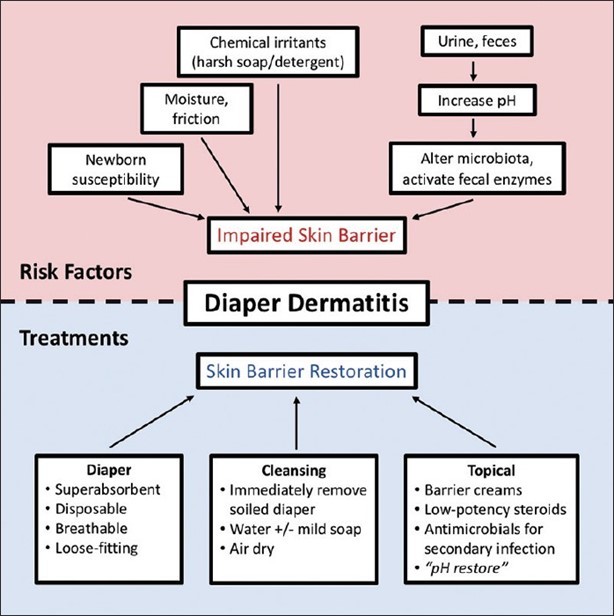The mother of a 7-month-old brings the infant to the clinic because the skin in the diaper area is excoriated and red, but there are no blisters or bleeding. The mother reports no evidence of watery stools. Which nursing intervention should the nurse implement?
Instruct the mother to change the child's diaper more often.
Ask the mother to decrease the infant's intake of fruits for 24 hours.
Encourage the mother to apply lotion with each diaper change.
Tell the mother to cleanse with soap and water at each diaper change.
The Correct Answer is A
The excoriated and red skin in the diaper area suggests the presence of diaper dermatitis, which is commonly caused by prolonged exposure to moisture and irritants such as urine and feces. Changing the diaper more frequently helps to minimize the exposure to these irritants and promotes better skin hygiene.
Asking the mother to decrease the infant's intake of fruits for 24 hours is not necessary unless there is evidence of diarrhea or specific dietary concerns. Fruits are generally a healthy part of an infant's diet and do not directly cause diaper dermatitis.
Encouraging the mother to apply lotion with each diaper change may not be recommended in this case, as lotions and creams can further trap moisture and exacerbate the condition. It is best to keep the area clean and dry.
Telling the mother to cleanse with soap and water at each diaper change may be too harsh for the infant's sensitive skin. Plain water or mild, fragrance-free wipes are typically sufficient for cleaning the diaper area. Soap can be drying and irritating to the skin, so it is generally not necessary unless there is a specific indication.

Nursing Test Bank
Naxlex Comprehensive Predictor Exams
Related Questions
Correct Answer is D
Explanation
The correct answer is choice D: Begin chest compressions at 100/minute.
Choice A rationale:
Observing for swelling at the fracture site is not immediately relevant in this emergency situation. The priority is to address the lack of pulse and respiration.
Choice B rationale:
Analyzing the cardiac rhythm in another lead is unnecessary when the patient has no pulse and is not breathing. Immediate life-saving measures are required.
Choice C rationale:
Obtaining a 12-lead electrocardiogram is not the priority in this scenario. The patient needs immediate resuscitation efforts.
Choice D rationale:
Beginning chest compressions at 100/minute is the correct intervention. The absence of a carotid pulse and spontaneous respirations indicates cardiac arrest, and chest compressions are essential to maintain circulation and oxygenation until further help arrives.
Correct Answer is D
Explanation
A) Incorrect - Skin redness might indicate irritation, but the initial focus should be on the client's sensation.
B) Incorrect - Decreasing the strength of the electrical signals might be premature if the sensation is normal.
C) Incorrect - The amount of gel coating on the electrodes might not be the primary issue if the client is feeling a tingling sensation.
D) Correct- A tingling sensation is normal and expected when using a TENS unit, and it does not indicate any harm or damage to the skin or nerves. However, the sensation should not be painful or unpleasant for the client, and the nurse should adjust the intensity of the electrical signals accordingly.
Whether you are a student looking to ace your exams or a practicing nurse seeking to enhance your expertise , our nursing education contents will empower you with the confidence and competence to make a difference in the lives of patients and become a respected leader in the healthcare field.
Visit Naxlex, invest in your future and unlock endless possibilities with our unparalleled nursing education contents today
Report Wrong Answer on the Current Question
Do you disagree with the answer? If yes, what is your expected answer? Explain.
Kindly be descriptive with the issue you are facing.
